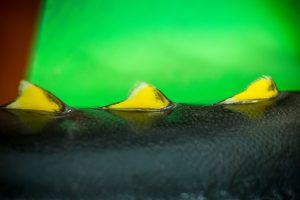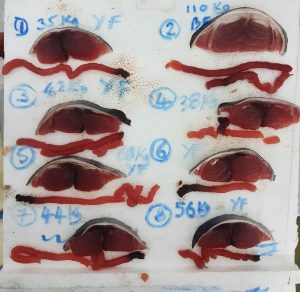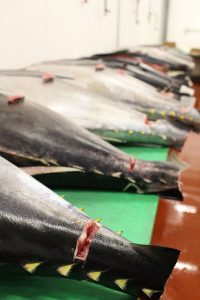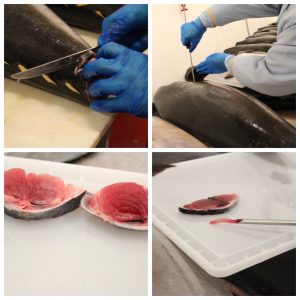All You Need to Know About Tuna Grading
Ever wonder how we grade our tuna? We’ll tell you!
A good tuna grading program always starts with sourcing.
When a tuna gets hooked, it starts to swim in circles to try to escape. Tuna can raise their body temperature 5-10 degrees higher than regular water temperature, actually cooking the fish from the inside out. As it starts to calm down, the temperature drops. And this is when you want to reel in the fish. Once the fish is pulled onto the boat, a method called Ikejime is used. Fishermen will stick a long metal rod down the spinal colum n to paralyze the fish and maintain the freshness of the meat. This ensures there is no lactic acid build up in the muscle when the fish is bled.
n to paralyze the fish and maintain the freshness of the meat. This ensures there is no lactic acid build up in the muscle when the fish is bled.
After the process of Ikejime, the tuna is gutted, and the fish is put into an ice hold with sea water. You want to bring the body temperature down just above freezing as quickly as possible. The fish stay in the slurry, belly down so the blood can drain out. If done properly with no fluctuations in temperature, a high percentage of the catch will be graded as #1. Not only does this process ensure a great product for the end user, but it also behooves the fishermen to generate the best quality fish possible to maximize the value of the catch.
When the fish is off loaded from the boats, the head and tail are removed and the fish will undergo their first grading process. Each shipment of fish is sent with a grading report. The skin color and ap pearance can be some indication of quality, but more important is the quality of the flesh.
pearance can be some indication of quality, but more important is the quality of the flesh.
Finally, we receive the fish fresh at our doors here at Samuels and we begin the second grading process. After lining up all the tunas in our cutting room, we take a small half-moon shaped sample from the smallest diameter of the fish, the tail. The tail is the first place to chill down, so it should be the best looking part of the fish. Next, a core sample is taken from right underneath the fin all the way through the belly. This is the last part to chill and also the last to go bad, making it a great indication of quality. A long metal instrument called a “Sashibo” is pierced into the flesh to extract a sample.
What are we looking for? The Two C’s. Color and Clarity. A good base point is Red Gatorade or Red Jello.
#1: Super bright red, super clear. Sashimi grade
#2: A slight loss of color and clarity. Good for poke, or other cured applications.
#3: A little more opaque, “grill grade”, can have a bitter taste if eaten raw. Stick to grilling.
All of this information is used to determine the final grade of the fish. Then the fish is packed up and delivered to our customers, for you to enjoy!






